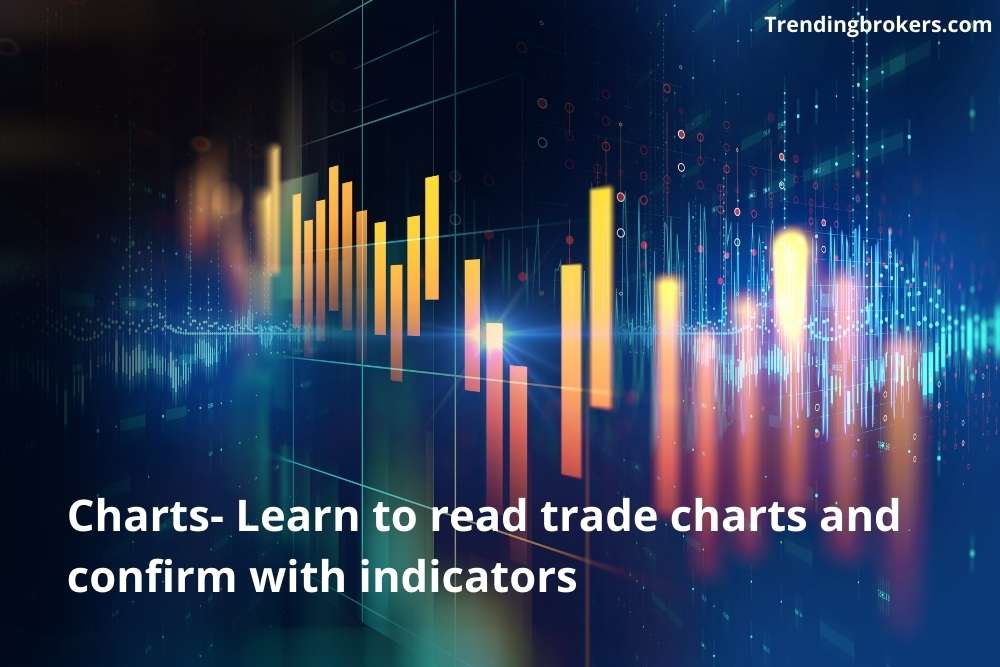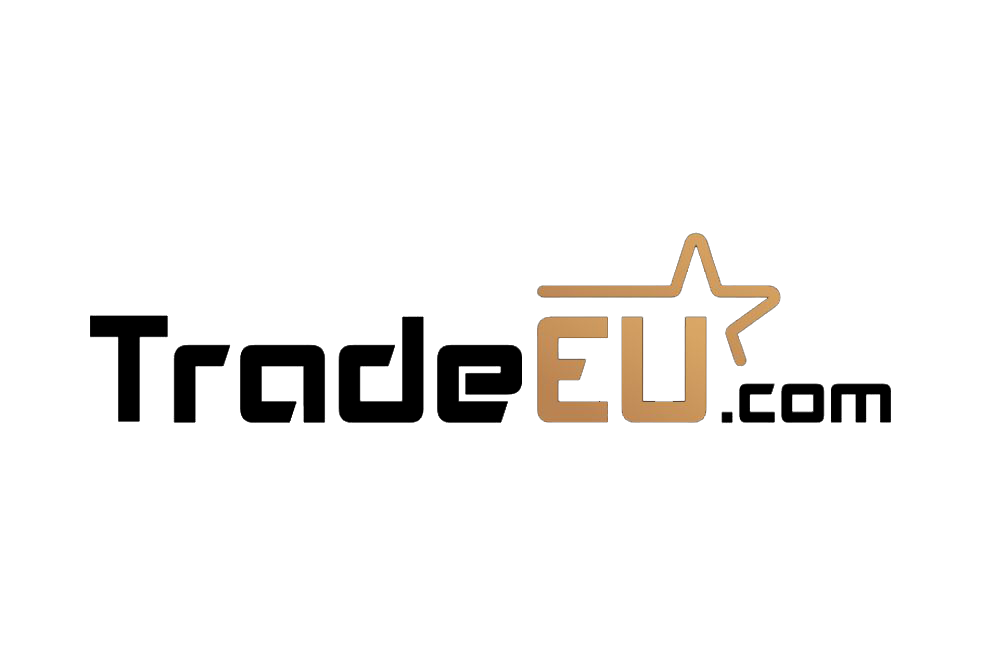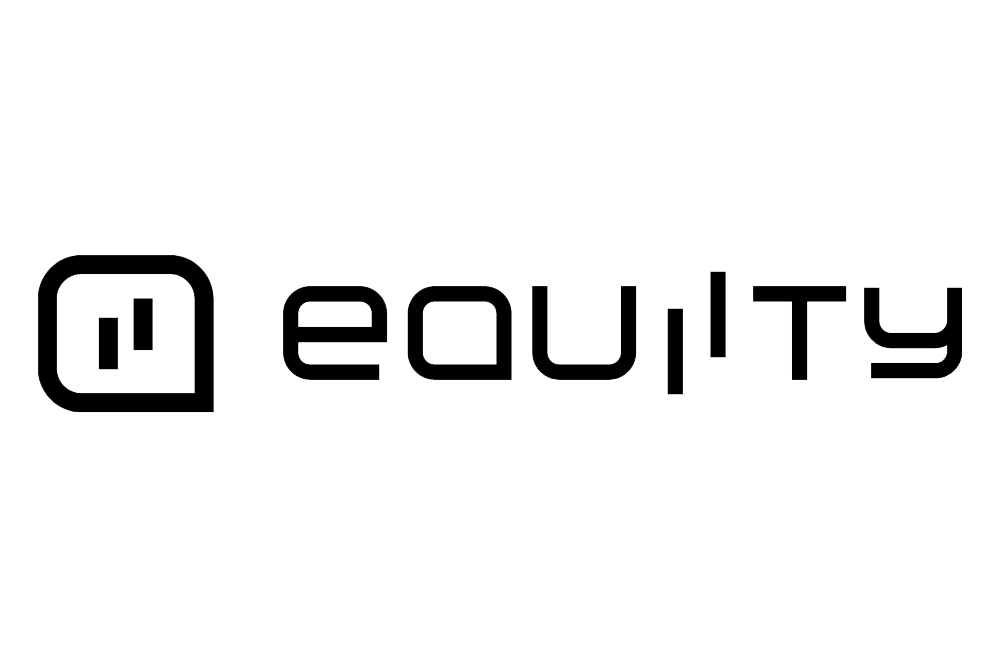Data and information available on a chart can help you to make an informed trading decision. You can predict the right time to open and close your position with the help of trade charts and technical indicators. Charts play a huge role in the technical analysis process. Technical analysis is a crucial part of trading in any market. The absence of technical analysis in your trading journey means you are on a boat without a sailor.
Many traders get attracted to trading because of short-term gains, but for that, you need to put effort into learning and improving your technical analysis skills. Here we are going to discuss trade charts and the role of technical indicators in reading them. It is necessary to be in a zone of traders who approach buying and selling with thorough research and risk management.
Many kinds of trade charts include line charts, bar charts, candlestick charts and more. Candlestick is the most popular and common chart type. Reading trade charts is all about identifying the direction of the price trends correctly. So let’s begin with how to read trade charts and confirm with indicators.
What are trade charts?
Trading charts are often used to show how the price change is portrayed over time. Charts are a valuable tool for internet traders and are used extensively in technical analysis. They provide information and a long-term perspective, and they may be able to aid you in making trading selections. Thus, the trade charts are one of the most important trading tools.
You may be intimidated by graphs and numbers in general, but charts can be your closest friends when investing in stocks, commodities, indices, or currency through CFDs. In addition, trade charts are by far the most popular and widely utilised among intraday traders.
The trade charts can help you better understand how stock prices fluctuate. The graphs reveal everything there is to know about a stock’s performance. These charts are valuable in examining short-term, medium-term, and even long-term periods and can be referred to while making decisions.
How to read trade charts?
Identifying uptrends, downtrends or across the board, as well as recognising when they are likely to reverse, is critical to your trading success. However, before diving into patterns and indicators, let’s first define what a trading chart is. In a nutshell, a chart is a graph that plots and illustrates the exchange rates that occur between two financial assets.
Like anything else in life, the more you practise, the better your talents become. This article will help you get started on your journey to better understanding and using charts in your trading. You must be able to follow charts regardless of the asset you are trading.
Technical traders are those who trade with charts. Reading trading charts is an important component of trading, and the more you know about it, the better a trader you will be. They prefer to use charting tools and indicators to detect peaking trends and price points, which they use to determine when to join and exit the markets.
Fundamental traders favour news sources that provide statistics on economic development, job data, and geopolitical drivers like political instability.
Example of trade charts
Three basic chart types are widely used in the trading community. Depending on the traders’ ability level, each chart type provides a variety of distinct information.
Line Chart
Line charts are one of the most common trade chart types, and it serves as a stepping stone for new traders. This type of chart is a simple technique to depict a market’s overall price movement over a set period of time. In essence, a line chart is created by connecting the closing prices across a certain period. Thus, in line charts, you won’t see the trading range and the information regarding opening or closing prices.
Stock traders once utilised line charts. They are created by drawing lines from one closing price to the next closing price. To form a continuous line that is easy to follow, each closing price is linked to the preceding closing price. Therefore, this graph only shows the closing price over a given time.
It contains less information than candlestick or bar charts, but it is ideal for a quick glimpse at the market. If you’re just getting started in the financial markets, line charts are a wonderful place to start. When analysing data, the closing price is frequently regarded as the most relevant factor.
Novices generally favour line charts because of their simplicity in recognising technical patterns. In addition, because it is basic and easy to understand, this type of chart is frequently used in television, newspapers, and numerous websites.
Bar Chart
Bar charts, unlike line charts, show both the opening and closing prices for an instrument, as well as the highs and lows for that period. For each time specified for the bar, a bar chart displays the high, low, open, and closing (HLOC) prices. Thus, the entire bar indicates the trading range over a certain period. When comparing this chart type to a candlestick chart, the similarities are obvious. However, a bar chart is preferable for a clearer view of the market.
The vertical line is formed by the bar’s high and low prices. The opening price was indicated by the dash to the left of the bar, while the closing price was indicated by the dash to the right. Thus, the lowest traded price for the given time is shown at the bottom of the bar, while the highest price paid is shown at the top.
Knowing whether a bar is up or down reveals whether the market is bullish or bearish for that period to the trader. If the bar is up, the colour shown will be green, and when it’s down, the colour will be red. Traders can easily understand the market patterns by eliminating the bolded colour from the chart. Horizontal dashes near the vertical bar reflect the opening and closing prices, respectively.
Candlestick Chart
Candlestick charts, like bar charts, display the same data but are perhaps more visually appealing. The body of a candlestick indicates whether it was a bullish or bearish candle. The candlestick chart is the most popular type of chart among traders worldwide as they use it for technical analysis in the foreign exchange market because it delivers more information to the trader while still being easy to read at a glance.
An upward shadow indicates the highest price, while a lower shadow indicates the lowest. Short candlesticks indicate price movements and represent consolidation. In addition, candlesticks, as opposed to bar charts, are easier on the eyes of traders due to their broader nature.
If the body is dark, it usually indicates that the currency or CFD closed lower than it opened. Candlesticks, like bars, refer to a high-to-low range with opening and closing levels. A white candle, on the other hand, indicates a bullish trend.
There will be a bullish trend when Green candles indicate that the price closed higher than it opened, while red candles indicate that the price closed lower than it opened; this scenario will determine a bearish candle. The more the purchasing or selling pressure, the longer the body is. That is to say, the longer the body is, the greater the price change.
Other useful trade charts for beginners
Another helpful trade chart called the Renko chart is known for indicating price movements and resistance levels. Similarly, many charts like hourly charts, minute charts, tick trade charts are used to determine the price movements in different timeframes.
These trade charts are mainly used for short-term trading strategies like scalping to take advantage of high-liquid markets.
Role of indicators in your charts
As you become more familiar with reading charts, you can begin to use technical indicators to obtain even more insight into an asset’s current price activity, as well as to assess market volatility and value changes. In addition, traders can use trend indicators to spot and profit from changes in trending markets. Moving averages, for example, have a slope and direction that indicate the trend’s direction as well as its velocity.
Various indicators aid traders in understanding various price components such as trend, momentum, volatility, volume, and market cycles. Long-term position traders who want to profit from price fluctuations over a more extended period utilise monthly and weekly charts.
A divergence indicates that the trend is slowing down, and it is the perfect confluence factor for trend reversal chart patterns. The RSI showed that selling pressure was building as the chart pattern persisted and sellers began to dominate the market. The RSI dropped steadily lower, confirming the negative pressure.
Triangles, a continuation pattern that depicts a pricing fight between rising and declining prices, are one of the most significant patterns to understand. This suggests that the price is likely to continue in the same direction as it was before the pattern was discovered.
The double top, which shows the price achieving two highs and signifies a reversal from a bullish to a negative trend, is another important pattern to understand. The double bottom signifies a reversal trend from negative to bullish, indicating an oncoming rise. These signs can also be used to determine whether markets are oversold or overbought, as well as whether a reversal is approaching.
By far, the most common price chart among investors is the time chart. From seconds to monthly trade charts, all timeframes are included. Different timeframe charts aid in the price analysis of various trading strategies.
Oscillators include momentum indicators like the RSI, MACD, and Stochastics. They aid traders in identifying overbought and oversold market circumstances. The time horizon can be anything from a few months to several years. Institutions and high-net-worth individuals who seek gradual, consistent profits over time like this sort of trading.
Technical indicators are mathematical tools that assist traders in inputting previous and present market activity into context in order to forecast future price direction.
A reading of over 80 on the stochastics indicates overbought situations, prompting traders to sell. On the other hand, a reading of below 20 indicates oversold conditions, prompting traders to buy the underlying asset. You can see how crucial it is to be able to spot patterns in these examples to your trading success.
Bottom Line
Multiple technical indicators are beneficial in reading trade charts as they play a huge role to confirm the parameters like entry and exit points. In addition, traders often use charting tools to determine the support and resistance levels. If you are a beginner, you can use the charts discussed above. Remember, trade charts and indicators play a massive role in technical analysis. Whether you are a beginner or expert, you have to use trade charts to become a successful trader whether you trade in forex currency pairs, stock or indices.
You can access these trade charts in a favourable trading environment with PrimeFin. In addition, the broker offers more than 60 analytical tools for conducting technical analysis successfully.


